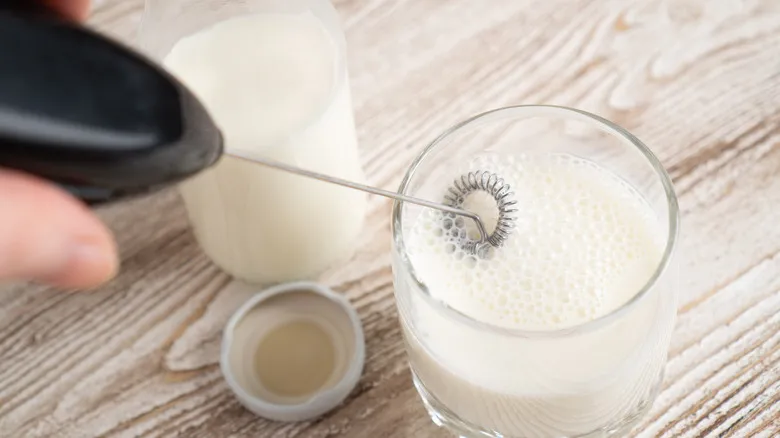Espresso and milk over ice

Many individuals enjoy iced cappuccinos made with equal parts espresso and milk, while iced lattes typically contain a greater proportion of milk. It's important to note that cappuccinos traditionally have a higher overall milk content—approximately twice as much milk as espresso—though about half of that milk is incorporated into the foam. In the final drink, the espresso and milk are relatively balanced.
Conversely, an iced latte features a larger amount of milk in the drink itself. Recipes often call for just a single shot of espresso (equivalent to one fluid ounce) combined with four or more ounces of steamed milk. Minimal, if any, milk is used for the foam, and some people believe that foam or steamed milk is unnecessary for an iced latte. Consequently, iced lattes generally have more calories than iced cappuccinos, as espresso is quite low in calories (with a single shot containing around two calories), while milk contributes significantly more, depending on the type of milk used.
Making foamy iced espresso drinks

Typically, milk foam is created by mixing or whisking heated milk, although baristas and espresso enthusiasts often use milk frothers. The foam can be a topic of debate among baristas: some are hesitant to add hot foam to a cold cappuccino, arguing that the combination of hot and cold can compromise the drink's quality and cause the ice to melt more quickly.
If you don’t have a milk frother, you can still make cold milk foam using a French press. Skim milk works well for cold foam due to its good protein content. A simpler option is to use whipped cream, which is at room temperature and won’t warm up your iced drink, though it will be thicker and sweeter. Regardless, you can still enjoy an iced cappuccino topped with plenty of foam. Many coffee shops offer this, and if you have a Dunkin' nearby, they serve iced cappuccinos with generous layers of thick foam on top.
Recommended

Give Your Favorite Mug A Peanut Butter Coating For Rich, Creamy Lattes

Princess Diana's Favorite Tea Had A Light Floral Twist

Why It's A Mistake To Store Coffee Beans In The Bag They Came In

5 Expert Tips For Buying Better Canned Cold Brew
Next up

